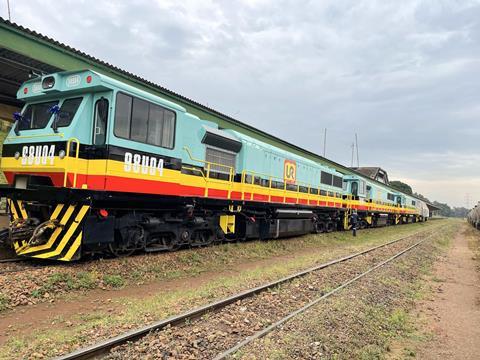
UGANDA: The African Development Bank has approved a US$301m financing package to support the ongoing renovation of Uganda Railways Corp’s metre-gauge main line between Kampala and the Kenyan border at Malaba.
The mix of loans and grants was approved by AfDB Group’s board on November 30; the package has also been endorsed by Uganda’s cabinet and parliament.
As well as the 221 km line from the border to Mukono in the suburbs of the capital, the programme includes the refurbishment of the branches serving Jinja Pier and Port Bell on Lake Victoria, taking the total length to be rehabilitated to 265 route-km.
The project aims to increase the provision of rail services for international traffic and reduce high freight transport costs. Currently, more than 90% of the traffic along Uganda’s northern corridor is carried by road; only 7% moves by rail because of the poor condition of the infrastructure.
The AfDB funding will also support training and skills development to strengthen the URC workforce, as well as measures to encourage tree planting to enhance the climate resilience of the railway formation.

Renewal of the metre-gauge network in the region reflects a waning of enthusiasm for the development of new 1 435 mm gauge lines. In February 2017 the Kenyan and Ugandan governments agreed to develop a standard gauge link from Kampala to the Malaba and the railhead at Suswa south of Naivasha in Kenya’s Rift Valley, which is the current terminus of the Chinese-backed Standard Gauge Railway corridor running from inland from Mombasa.
However, with the two governments failing to raise the funding required to complete the planned SGR scheme, the Kenyan government announced in 2019 that it would instead invest in revitalising the existing metre gauge main line between Nairobi and the Ugandan border.
On December 8 Uganda’s Minister of State for Works & Transport Fred Byamukama reported that rehabilitation work on the Malaba – Mukono railway and the Jinja pier branch had reached 80% complete by the end of June. The current priority was turnout replacement and the reconstruction of level crossings, he added. URC anticipates that the work is on course for completion by the end of Deember.

















